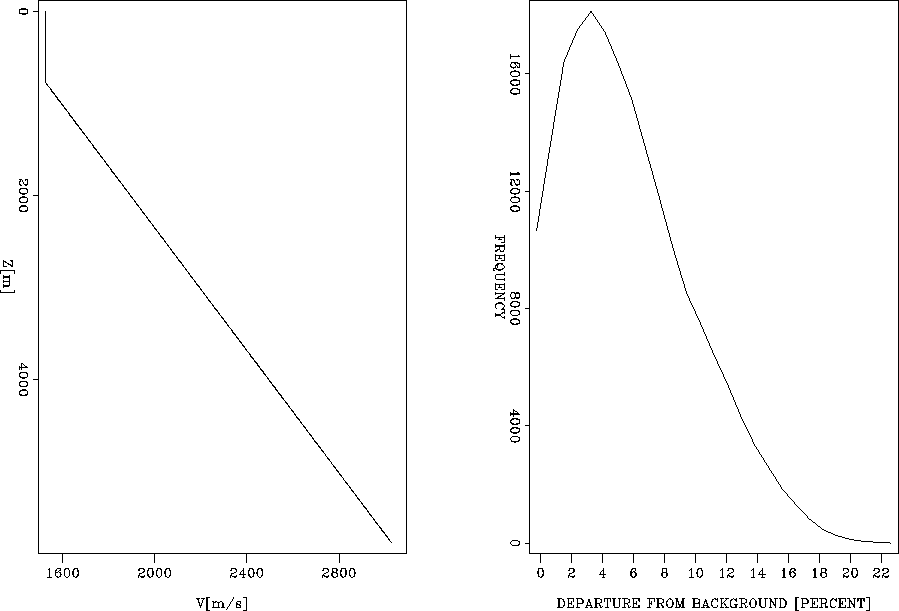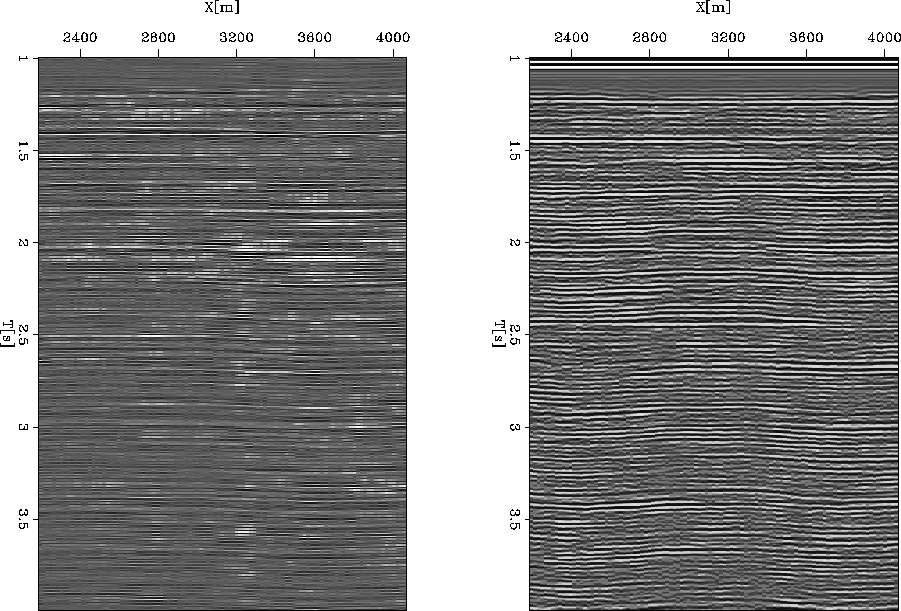|
velomod
Figure 1 Left: Background velocity; Right: Histogram of velocity deviation from the background, in percentages, for a random number of samples in a certain region of the model. |  |
![[*]](http://sepwww.stanford.edu/latex2html/cross_ref_motif.gif) displays some properties of the velocity model.
displays some properties of the velocity model.
|
velomod
Figure 1 Left: Background velocity; Right: Histogram of velocity deviation from the background, in percentages, for a random number of samples in a certain region of the model. |  |
![[*]](http://sepwww.stanford.edu/latex2html/cross_ref_motif.gif) shows both multiple-free
data created with a one-way algorithm (split-step with three reference
velocities) and multiple-affected data
shows both multiple-free
data created with a one-way algorithm (split-step with three reference
velocities) and multiple-affected data![[*]](http://sepwww.stanford.edu/latex2html/foot_motif.gif) created with a
finite-difference algorithm. Vertical streaks of high-amplitude
focusing are visible, especially in the multiple-free panel.
created with a
finite-difference algorithm. Vertical streaks of high-amplitude
focusing are visible, especially in the multiple-free panel.
 |